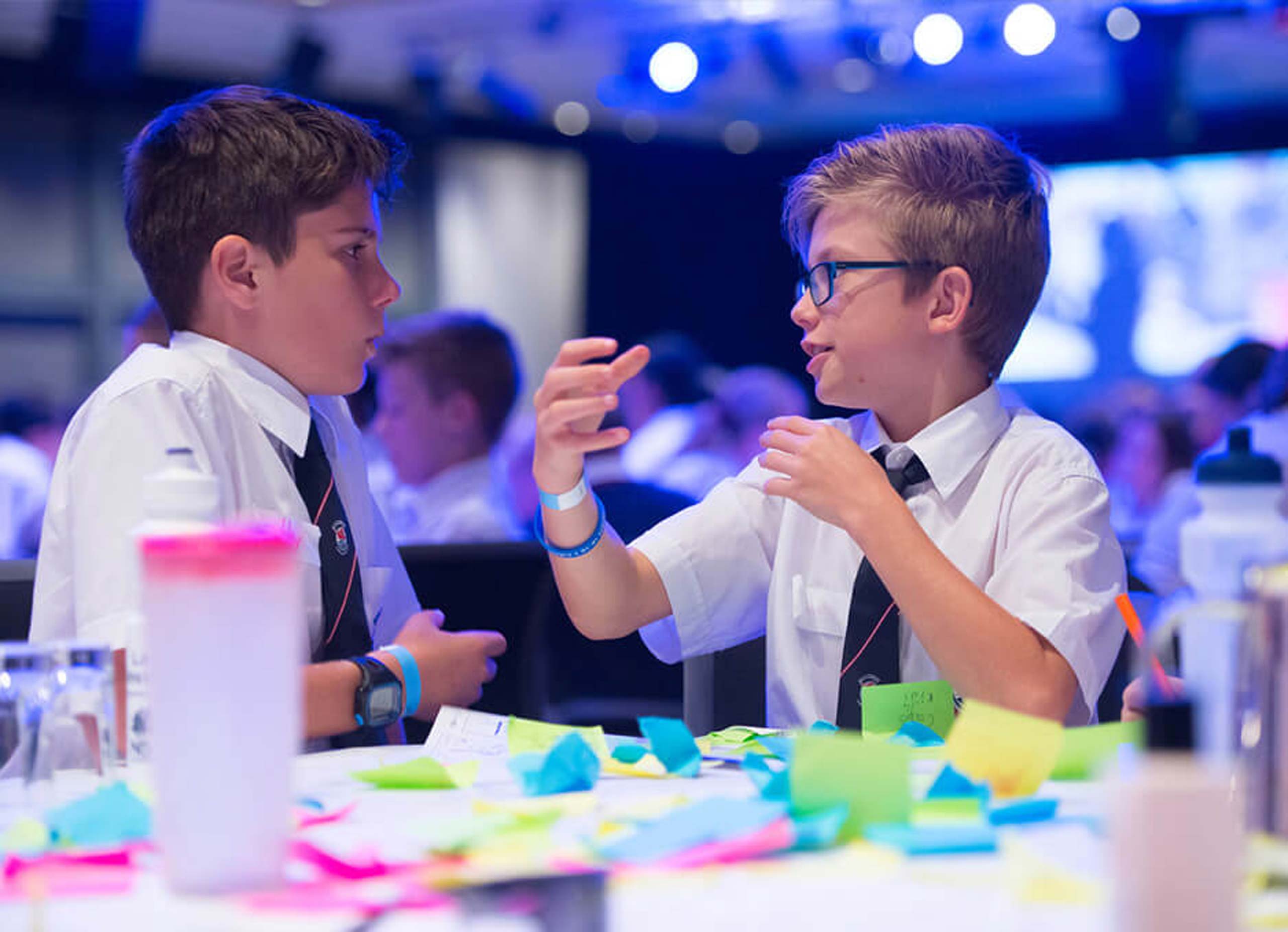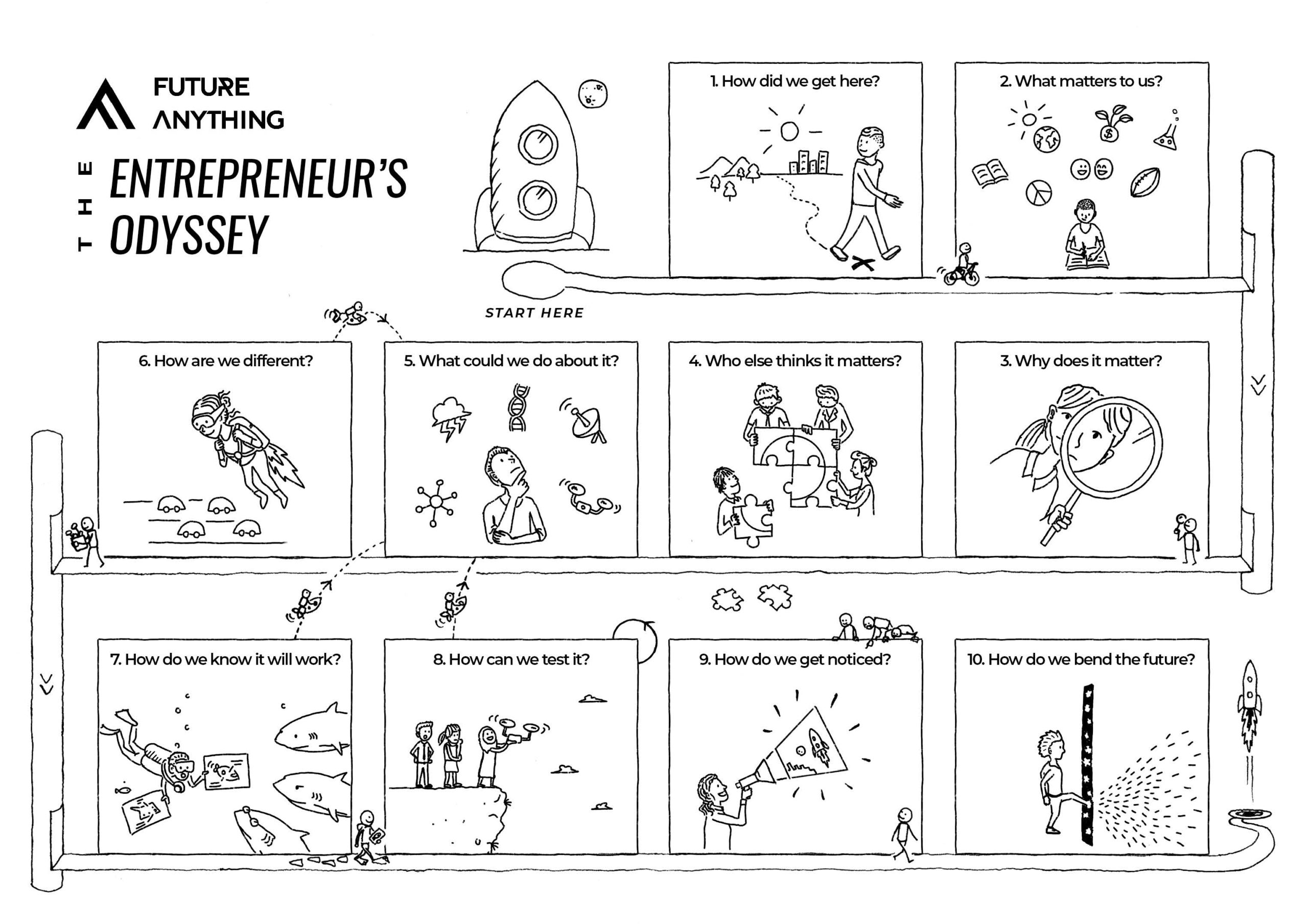There’s no shortage of design thinking frameworks floating around the internet these days. As defined by the Interaction Design Foundation, design thinking is a “non-linear, iterative process that teams use to understand users, challenge assumptions, redefine problems, and create innovative solutions to prototype and test.”
Typically, most published processes involve five phases—Empathize, Define, Ideate, Prototype, and Test. The challenge for educators is how do we transform these processes into scaffolded learning experiences that young people in our classrooms can engage with- and relate to?
This is where our Entrepreneur’s Odyssey comes in.
The product of five years of delivering entrepreneurial education in hundreds of schools to thousands of students nationally and internationally, we’ve purpose-built an education-specific design thinking framework that supports students to empathize, define, ideate, prototype and test their entrepreneurial ideas in a language they (and their teachers) can understand.
For now, let’s look at the Odyssey as a whole. However, over the course of the subsequent newsletters, we’ll unpack each of the ten steps in more detail; stepping through the specific classroom resources and templates you can use to support your students to go from looking at problems that matter to them, to pitching innovative, scalable, and sustainable solutions that make their world a better place.
The Entrepreneur’s Odyssey
Step 1: How did we get here? [Emphathise]
In this first step, students complete a series of activities designed to help them understand and appreciate how their past has informed their present; creating personalized areas of expertise and authenticity.
We believe that the best entrepreneurs often draw from their own life experiences in order to create enterprise solutions that solve problems they can relate to authentically.
Step 2: What matters to us? [Emphathise]
Students complete a series of activities designed to understand who they are; their strengths and weaknesses, as well as what matters to them, and the world around them.
We believe that the best entrepreneurs know themselves, often drawing from their values and passions in order to solve problems that matter to them.
Step 3: Why does it matter? [Define]
Students complete a series of activities designed to dive deeper into their understanding of a chosen problem; exploring the causes, consequences, and personal stories of those who experience the problem first hand.
We believe the best entrepreneurs care more about the problem they are solving than the solution they are creating
Step 4: Who else thinks it matters? [Define]
Students complete a series of activities designed to explore who else is playing in the same space they want to influence, and how they can use partnerships and collaboration to solve their chosen problem better, faster and more efficiently.
We believe the best entrepreneurs ask for help, leveraging the experience, expertise, and support of other people and organizations that care about the same problem.
Step 5: What could we do about it? [Ideate]
Students use design thinking methodology to ideate many wild and divergent solutions. From here, students prototype possible innovative, scalable and sustainable business solutions that might solve their chosen problem.
We believe the best entrepreneurs are naively optimistic; thinking wildly, creatively, and divergently about the many possible solutions to a problem, before converging on the probable.
Step 6: How are we different? [Ideate]
Students complete a series of activities designed to ensure their solution is different and/or better; offering a unique value proposition with clear points of difference from other solutions.
We believe the best entrepreneurs don’t reinvent the wheel; they make the wheel obsolete.
Yes, we’re different. Go to #8. No, we’re not, go back to #5
Step 7: How do we know it will work? [Prototype]
Students complete a series of activities designed to garner feedback from industry experts, the target market, and their target audience to test the validity of their top two prototypes. Based on the analysis of this feedback, students choose one of their two prototypes to pursue as a potentially viable solution to their chosen problem.
We believe the best entrepreneurs proactively seek feedback from many sources and spaces in order to build better solutions that matter.
At least one prototype works? Go to #7. Prototypes don’t work? Go back to #5.
Step 8: How can we test it? [Test]
Students use the lean startup principles to create and then test their Minimum Viable Product.
We believe the best entrepreneurs just start, and are able to pivot quickly once in market.
Success? Go to #9. Partial Success? Go to #6. Fail? Go back to #5
Step 9: How do we get noticed? [Marketing]
Students complete a series of activities designed to build the identity of their business through marketing, branding and pitching.
We believe the best entrepreneurs think strategically about how to position their brand to build momentum through targeted marketing and branding.
Step 10: How do we bend the future? [Reflection + Impact Measurement]
Students complete a series of activities designed to reflect on their journey thus far; ascertaining what is going well, what isn’t going well, what they could do differently, and why the work matters.
We believe the best entrepreneurs bend the future, one idea at a time.







